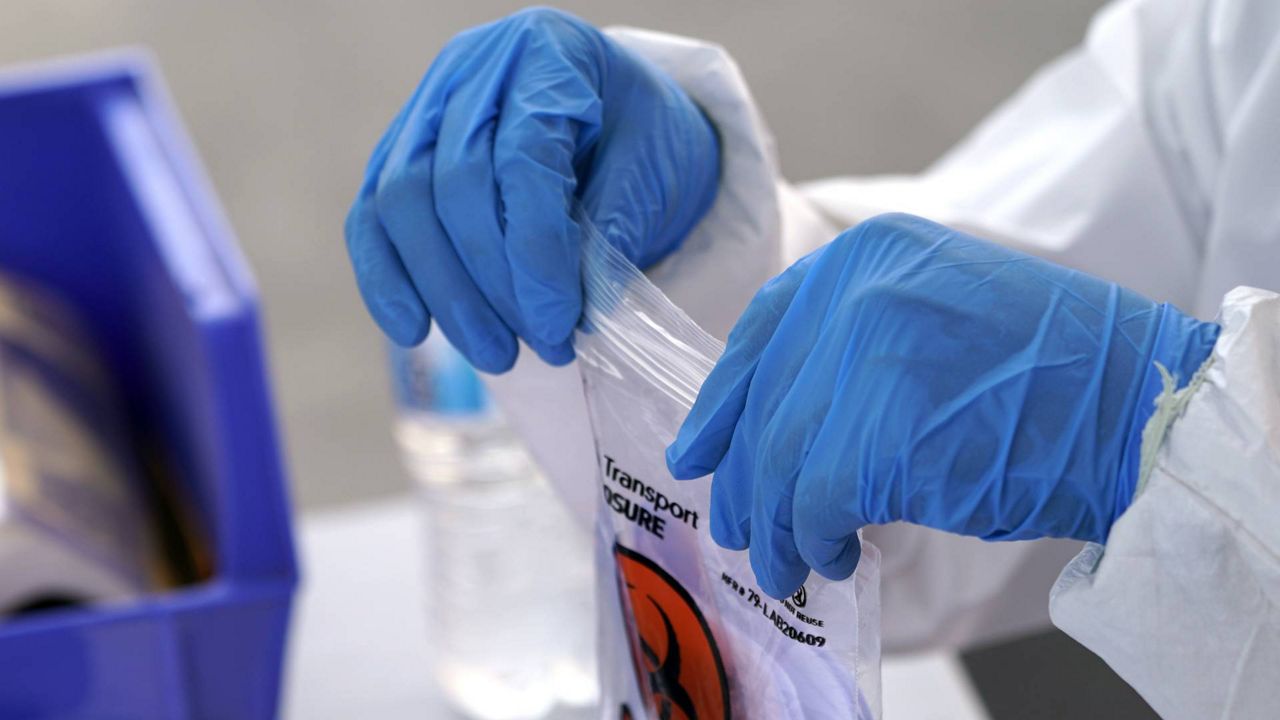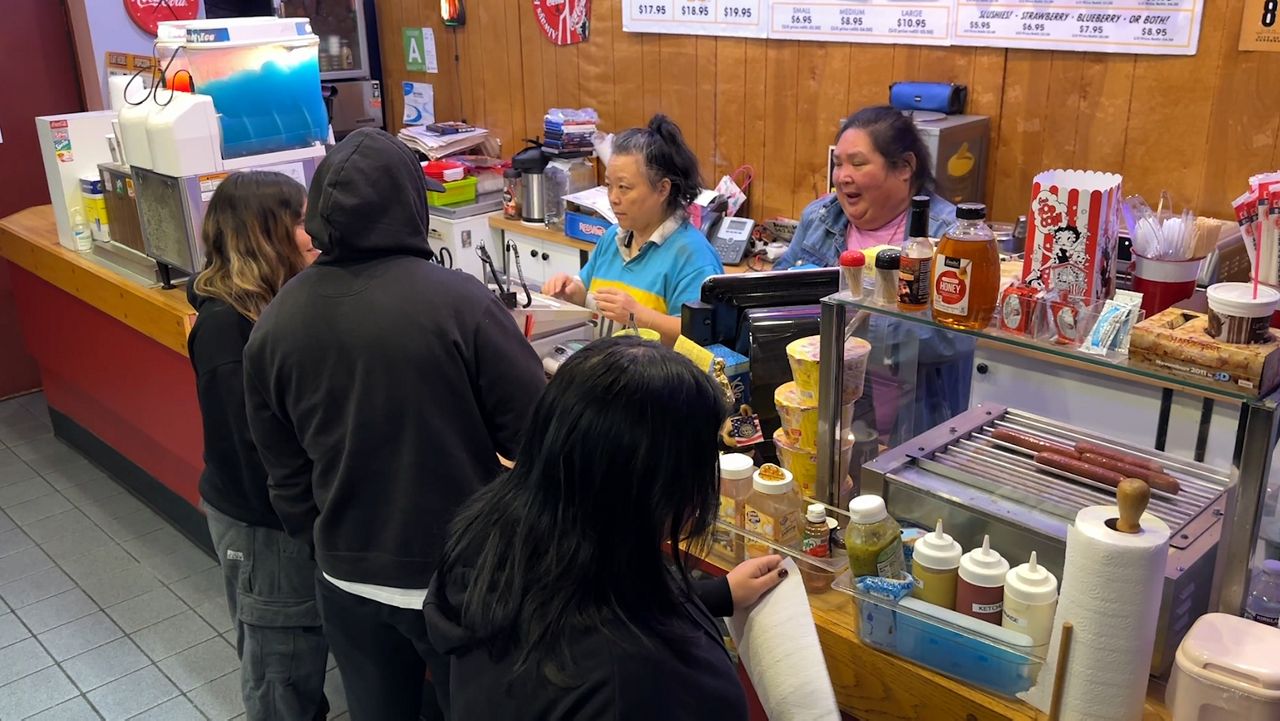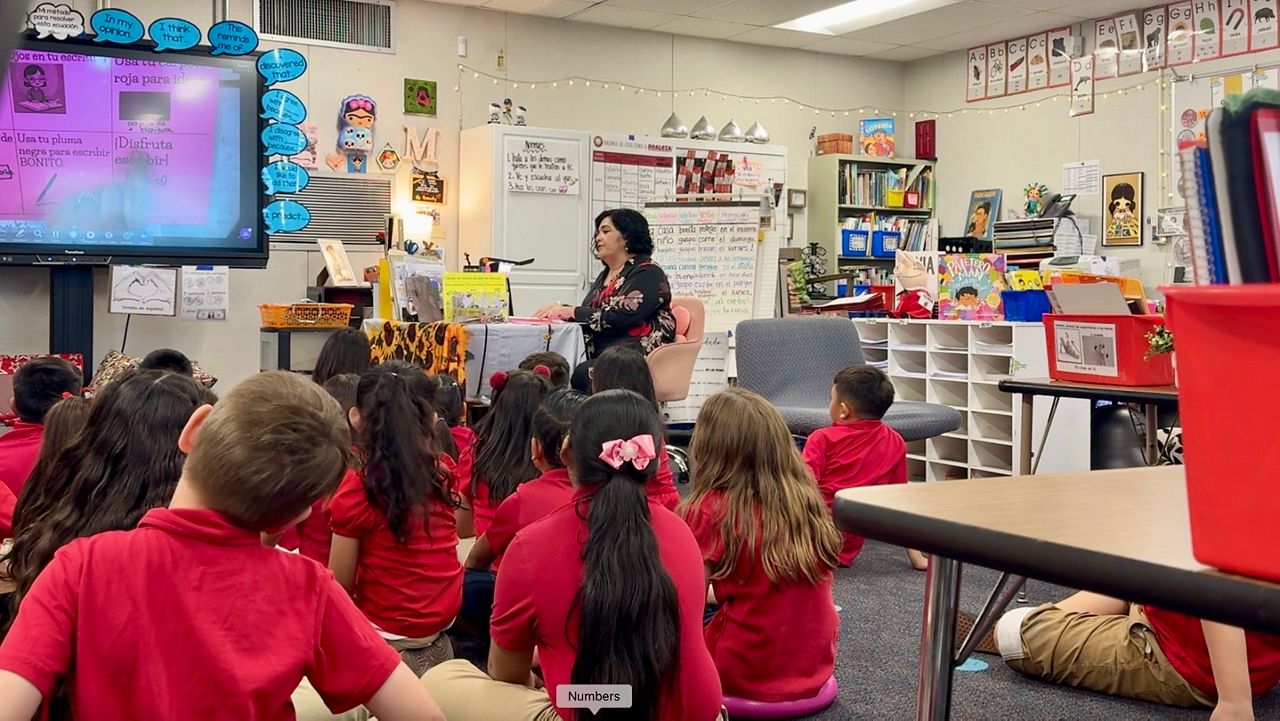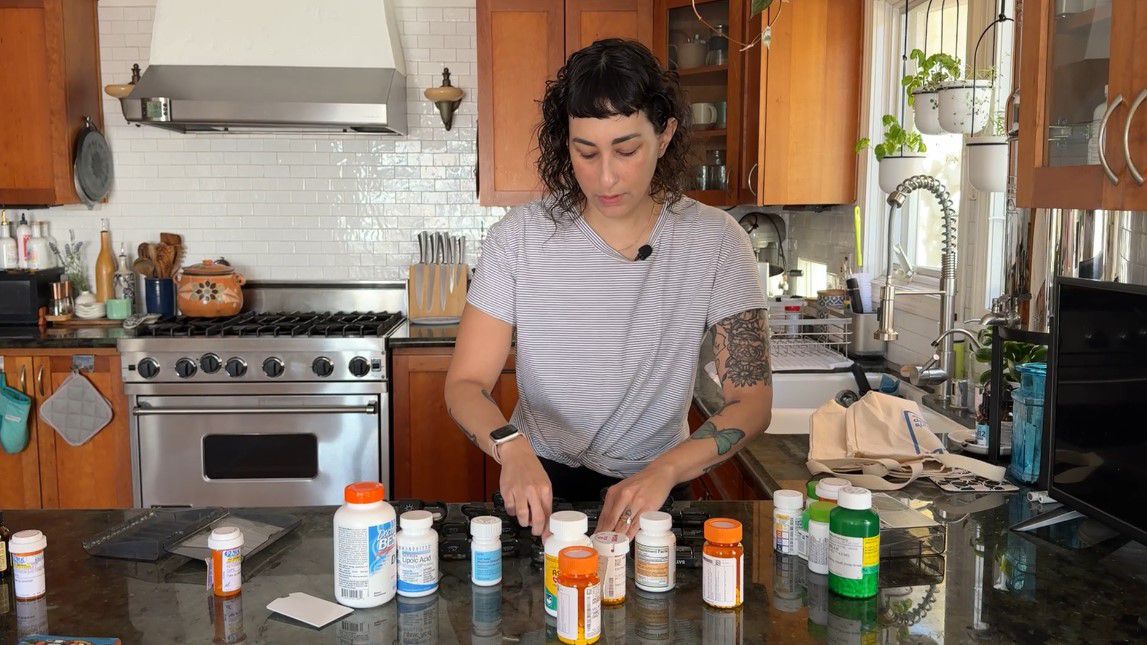SANTA ANA, Calif. (CNS) — The Orange County Board of Supervisors Tuesday approved a grant program to help restaurants serve customers outdoors now that the county has been put back into the most-restrictive purple tier, which prohibits indoor dining.
The supervisors unanimously approved spending $1 million in CARES Act funding to provide grants of $1,000 each to help owners of eateries acquire heaters, lamps, canopies, and other equipment needed to serve patrons outdoors during the fall and winter months.
What You Need To Know
- Orange County health officials reported 352 new coronavirus cases but no new fatalities on Tuesday
- In a press conference Tuesday, Supervisor Andrew Do announced a plan to provide at-home testing to residents
- The Board of Supervisors also approved a grant program to help restaurants serve customers outdoors
- The number of county residents hospitalized with the virus rose from 257 Monday to 270
The move came after dozens of speakers at the supervisors' weekly board meeting implored them to defy the state's new restrictions announced Monday and spurred by a surge in cases throughout California and the rest of the country.
Supervisor Andrew Do, the vice chairman of the board, responded that the county does not have the authority to ignore or rescind the state's orders. Do said that in the "checks and balances" of the state, it's California legislators who residents should be lobbying if they want businesses to remain as they were at the red tier or to be even less restrictive.
"There is a lot of suffering in our county and throughout our country," Do said. "This board, and all of us on the board, are sympathetic and empathetic."
Do added, "The check and balance here is between the executive and legislative branches and we have not heard from the legislative. Why not? We don't know. There is one party very much in the majority and I see this as a dereliction of their duty, the responsibility in the legislature to not push back or to even question at least or require the articulation of standards and to defend the actions and changes."
Do said the county board is a "political subdivision of the state and our chief health officer, Dr. Clayton Chau, is an agent of the California Department of Public Health."
If Chau defied the state's orders, then state officials would just remove him from his position and enforce the guidelines, Do said.
Orange County Supervisor Lisa Bartlett, the president of the California State Association of Counties, said on Monday that the state is concerned about having enough medical staff to service hospitalized patients. At Tuesday's meeting, she emphasized that Orange County's medical centers are well prepared to handle a surge.
"We were solidly in the red tier for probably two months and to take a broad brush and apply it to all the counties in Southern California — for us to be thrown in the same tier — we have plenty of capacity in our hospital system," Bartlett said. "We feel like all the counties are being punished ... in the same program ... [But] every county is a bit different. We need to have a more individualized prediction in each county about their capacity to handle a rise in cases. In Orange County, we're very prepared, our healthcare system is very prepared."
Supervisor Doug Chaffee objected to the abrupt change in circumstances.
"Whatever I shared with my constituents last week is now wrong and that makes it very difficult to move forward," Chaffee said. "So that's another thing I would hope that the governor addresses better in the future — to allow time for a transition rather than the abrupt changes that we're seeing."
Under the previous rules, a county would have to be meeting the metrics of a more restrictive tier for two weeks and then be given three days to change after that before being knocked back down. Gov. Gavin Newsom, however, on Monday pulled the state's "emergency brake" and imposed the tighter restrictions within 24 hours.
The supervisors and Chau also pushed back on the stereotype that the county has been "anti-mask" and noted its statistics have been the best in Southern California.
"That is nonsense," Supervisor Don Wagner said of the county's reputation for resisting face coverings.
Do pointed out that Orange County was among the first to declare a public health emergency in February, and that in April, it approved one of the first mask mandates for food workers and some retail stores.
County health officials reported 352 new coronavirus cases on Tuesday, raising the cumulative count to 65,957. There were no new fatalities for the second consecutive day, so the death toll stands at 1,526.
We have posted the #OCCOVID19 cases reported to us today at https://t.co/XiphdjsVuR. Additionally, we are now making aggregate case information available on the site for #OC schools, colleges, universities and vocational institutions to provide the community with more context. pic.twitter.com/SdHJNClvSl
— OC Health Care Agency (@ochealth) November 17, 2020
Although cases have risen sharply — with more than 500 cases announced Friday and Saturday and more than 600 on Sunday — deaths have been decreasing. Last week, the county reported 18 deaths, compared with 24 the week before.
But Bartlett cautioned that deaths are often a lagging indicator and as hospitalizations increase, eventually so do fatalities.
The number of county residents hospitalized with the virus rose from 257 Monday to 270, with the number in the intensive care unit declining from 85 to 79, according to the Orange County Health Care Agency.
The change in the three-day average of hospitalized patients went from -0.7% to 5.3%. The county has 32% of its intensive care unit beds and 64% of its ventilators available.
Previously, a relatively small percentage of infected people needed hospitalization, but that number has crept up to 12% who test positive requiring a stay in a hospital, Bartlett said.
The rise in cases hit home locally when Orange County CEO Frank Kim was infected with COVID-19. Contact tracers suspect he was infected Nov. 5 and developed symptoms Nov. 7 before he was diagnosed as positive Nov. 10.
Kim, who is known for being careful with regard to social distancing and mask usage, told City News Service that his case was a cautionary tale about a highly infectious virus.
"You can have COVID, you can be infectious even if you're not symptomatic, so it's important for everyone to take it seriously so we're able to stem the growth of infections," Kim told CNS.
Kim is frequently tested and he quarantined as soon as he felt symptoms, so no one else he has been in contact with has been infected, he said.
According to OCHCA data, 1,270,081 COVID-19 tests have been conducted since the start of the pandemic, including 14,903 reported Tuesday. There have been 56,786 documented recoveries.
The county's positivity rate, which has been reported each Tuesday but was moved up to Monday, jumped up from 3.3% last week to 4.6%, and the daily case rate per 100,000 population ballooned from 5.6. to 10.8.
The county's Health Equity Quartile Positivity Rate, which measures a county's response to virus hot spots, decreased from 5.7% to 5.5% as of November 10. It was not updated as of Monday. The county has to reach at least 5.2% in that metric to be upgraded from the red tier to the orange tier.
Related Stories
- Orange County Slips Back Into Purple Tier of State's COVID-19 System
- Newsom Pulls "Emergency Brake" on California's Recovery, 41 of State's Counties Now in Purple Tier
- Dr. Fauci Says He “Would Not Hesitate” To Get COVID-19 Vaccine in One-on-One with Spectrum News
- LA County COVID Surge Has Officials Pondering Restrictions; Is Curfew Coming?
Kim said the case rate per 100,000 jumped higher than 8 as officials expected because the state began using a 4-day lag, instead of a 7-day lag.
The county is providing 277.9 tests per 100,000 residents on a 7-day average with a 7-day lag, but Kim said the county is aiming for 300 and may open up more lanes at super sites in Anaheim and Costa Mesa to speed up wait times.
Do said the county this week will announce a plan to provide coronavirus testing home kits to residents to help stem the tide of COVID-19. Plans are to make them available at public libraries and city halls throughout the county.
"We want it to be mobile and at the neighborhood level, so people can see testing as part of their holiday safe practices," he said. "Before you go to see your grandparents, two or three days before you get tested, and after the family get-together, you wait two or three days and get tested again. Then that way you know going in or coming out of a get-together if you're safe and the people you are with are safe."
Experts recommend the two- to three-day buffer because it can take that long before the infection is detected from a test.
The rise in cases is "alarming," he said. "It points to a very difficult winter season coming up, and couple that with the holiday season and people need to be very vigilant."










